
You have certainly heard of nuclear (or atomic) bombs - an example of military use of nuclear energy. A nuclear bomb is a device involving an uncontrolled chain reaction of fissile material. This process is extremely rapid, so the energy builds up and the temperature becomes extremely high, reaching tens of millions of degrees.
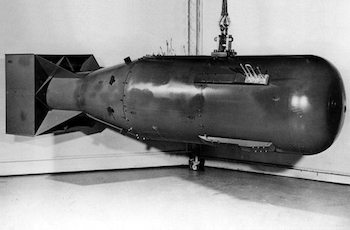
The pressure within the fissile material at such a temperature becomes enormous and the device explodes. For this to happen, the bomb must contain a critical mass (even supercritical mass) of fissile material. However, this does not mean all material fissions. The explosion happens before all 235U nuclei get the chance to undergo fission - in the bomb dropped on Hiroshima, for example, only about 2% of the uranium nuclei underwent fission. That was still sufficient to produce enormous destruction.
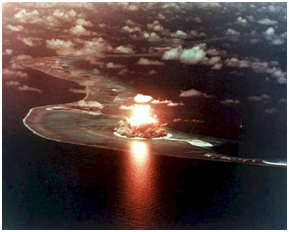
The lethal power of such bombs raises important ethical questions concerning the research and development of such weapons.
The possibility that terrorists might acquire and use nuclear weapons is an urgent and potentially catastrophic challenge to global security. In April 2010, the Nuclear Security Summit in Washington, D.C., focused on the threat of nuclear terrorism and participants made concrete agreements such as increasing security of nuclear materials and reducing the availability of plutonium and highly enriched uranium.
Nuclear energy may be used in very small devices like batteries. In exploring the planets and space one needs to have long lasting and efficient batteries (in fact, so-called pacemakers used by people with serious heart diseases are run also by such batteries). Radioactive power sources have been used for this purpose since 1961.
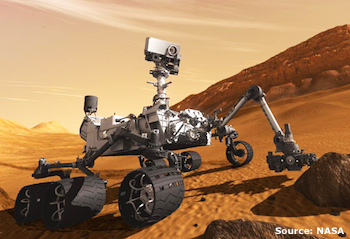
1) thermoionic radioisotope power generators in which the nuclear heat is used for creating an electric potential difference between two metallic electrodes, and
2) RTG - radioisotope thermoelectric generators in which the decay heat of e.g. 238Pu (0.56 W/g) is used for heating a p-n-type semiconductor junction (thermocouple)The Voyager space probes, the Galileo mission to Jupiter, and the Cassini mission to Saturn all are powered by RTGs. The Spirit and Opportunity Mars rovers have used solar panels for electricity and RTGs for heat. The Mars rover Curiosity uses RTGs for heat and electricity since solar panels alone would not be able to supply enough electricity.
Small nuclear reactors that use either thermoelectric or thermionic converters have been constructed and are being developed for various applications in spacecraft, for example in their propulsion.The use of nuclear fuel in a nuclear reactor results in an energy output that is some 100 million (108) times greater than that resulting from the use of an equivalent amount of chemical reactants!
Two propulsion systems employing nuclear reactors have been developed so far. The first one, the so-called nuclear thermal propulsion system (in short NTR for Nuclear Thermal Rockets), consists in heating up hydrogen propellant that is stored at low temperatures in liquid form. The hydrogen gas at about 2500 °C is then expelled through a nozzle to give thrust.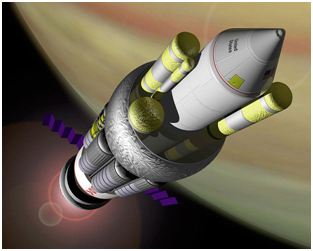
The use of nuclear energy in submarines and aircraft was considered almost from the beginning of the history of nuclear reactors. The hazard connected with the use of nuclear reactors in aircraft did not allow for real development of the idea in neither civil nor military aeroplanes, although the idea was developed, used and is still under development in the propulsion of spacecraft. However, nuclear propulsion is used very successfully in modern naval and civilian ships.
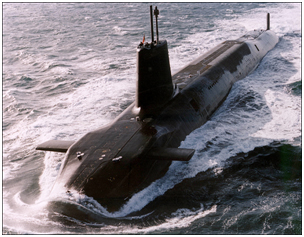
The reactors used in naval applications are of PWR type. All Russian submarines and all surface ships are powered by two reactors. Therefore it is important that these reactors be as compact as possible. Initially, this was achieved by using highly enriched nuclear fuel: 235U concentrations of 90%. In recent times, however, enrichments of about 20-25% in the U.S. reactor cores and about 50% in Russian ones are more common.
At first sight it would seem natural to wish to power cars through nuclear energy. In particular, the engine could run for many years without the need of changing the fuel elements. However, the energy source – a small nuclear reactor in fact – would produce neutrons that are highly penetrating ionising radiation. This radiation would be harmful for everybody in the car, and even for pedestrians around the car. In order not to expose the driver and passengers to neutron radiation, the biological shield of the core would have to be very bulky and very heavy – something that doesn’t really fit in with our current idea of a useful passenger car.
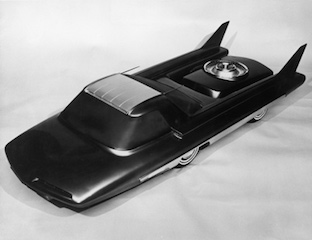
Hydrogen plays an increasing role in chemistry, in agriculture (production of nitrogen fertilisers), in the oil industry, and as a potential source of energy, i.e. as fuel. One would expect that among the variety of possible applications of hydrogen, its use in fuel cells would become the most popular. In light of the growing interest in hydrogen, there are estimates that the energy needed for its production may soon be as large as the present production of the electric energy.
One is thus very interested in efficient energy sources that can produce hydrogen, and here the use of nuclear reactors could be of vital help. Reactors can produce electric energy for carrying out electrolysis of water. The nuclear thermal energy can also be used for hydrogen production from natural gas and, in thermochemical processes, from water. In contrast to the chemical process in which the steam reforms natural gas, the thermochemical reactions have the advantage that carbon dioxide is not produced. Since in both cases relatively high temperatures are needed (1000-1300K), high-temperature reactors are likely to be used for this purpose. While working as regular nuclear power plants and delivering electricity to the grid during the day, such reactors could produce hydrogen during the night, preparing the hydrogen delivery for the next day.Nuclear energy is already used for the desalination of water – a problem of extreme importance for a large part of the world suffering from the lack of potable water, a particularly severe problem in Asia and North Africa. Such reactors can in addition produce electricity, i.e. work as small nuclear power plants. An example of a nuclear reactor producing both electricity and desalinated water is the BN-350 fast reactor at Aktau in Kazakhstan. Japan, Russia and Canada have all experience with nuclear reactors employed in the desalination of water and the International Atomic Energy Agency (IAEA) is strongly promoting this use of nuclear energy. The idea is to use the nuclear power plants for producing electricity for the grid during periods of greatest demand, and when the demand drops, to use part of the electricity produced for desalination purposes. Projects are being developed in India, China, Russia, Pakistan, Tunisia, Morocco, Egypt, Algeria, Iran, South Korea, Indonesia and Argentina.
To perform such studies one needs a lot of neutrons and Nuclear Reactors are extremely useful as they are giant neutron factories. Reactors designed for making neutrons for experiments are called research reactors. There are numerous applications of research reactors in science, medicine and technology.
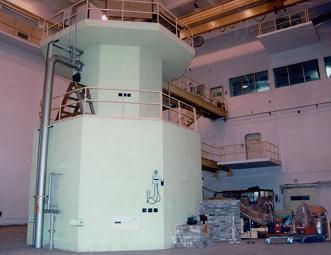
The most popular sources of neutrons for research are steady-state reactors that produce neutrons continuously. In most of them the reactor core is immersed in a water pool. The water forms part of the cooling system, acts as a biological shield and is also part of the neutron moderator. All nuclear power plants use steady-state reactors.
There are also pulsed neutron sources that produce periodical bursts of neutrons. Some of them use a spallation reaction instead of fission.A process that nowadays requires great skill actually occurred spontaneously in nature some two billion years ago. In the uranium mine Oklo in Gabon, West Africa, a sensational discovery was made in June 1972. It was discovered that the content of 235U in the uranium ore was substantially smaller than 0.72% found everywhere else. How could that be?
Since 235U has a shorter half-life than 238U, the relative abundance of 235U in the Uranium 2 billion years earlier must have been on the level of 3-4% instead of the typical 0.72%. But a 3-4% enrichment of uranium in 235U is quite typical for present power reactors. The hydrogeological conditions around the enriched Uranium ore were favourable for a chain reaction. Water is good neutron moderator and can serve also as a reflector. The 'reactor' was able to work when water was present. When water evaporated, the reactor stopped, until again fresh water would be available in the vicinity of the uranium ore. The ore became steadily poorer and poorer in 235U, so that what was discovered in 1972 was 235U that has been depleted by this natural fission 'reactor'.It is estimated that these natural reactors (17 fossil reactors were discovered in Oklo so far) operated for about 1 million years. The studies have shown that Oklo’s reactors bred also 239Pu that decayed (by alpha decay) to 235U, so they were natural breeder reactors! Oklo was a gift to mankind because studies of how Oklo’s long-living fission fragments diffuse through the ground allow us to estimate the effectiveness of underground repositories for nuclear wastes presently being built.